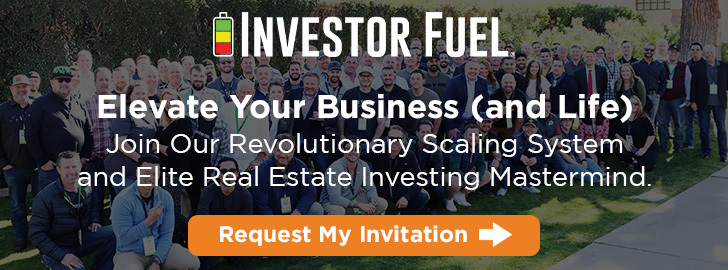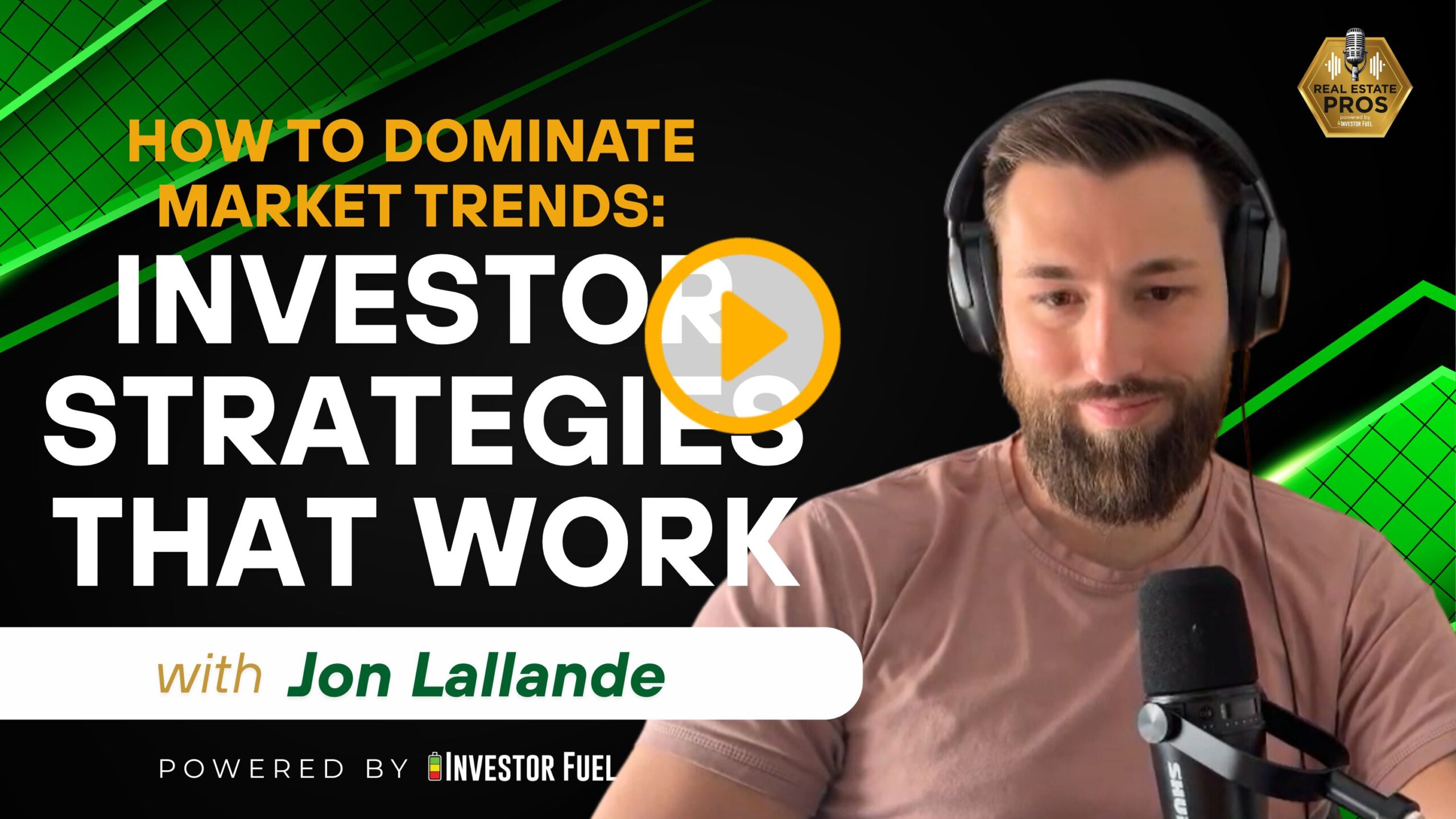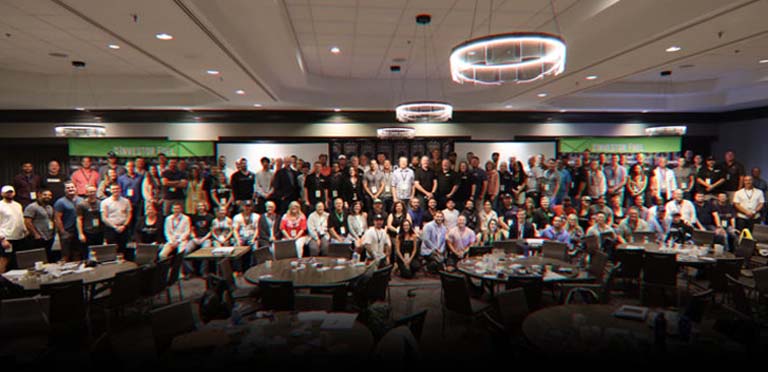
Show Summary
In this conversation, John Harcar interviews Jon Lallande, who shares his journey from being a sniper in the Marine Corps to becoming a successful real estate investor. Jon discusses the challenges he faced in the real estate market, including significant financial losses, and emphasizes the importance of having a solid sales process. He introduces the NEPQ (Neuro Emotional Persuasion Questioning) method, which focuses on understanding human behavior in sales and how to effectively communicate with sellers. The conversation highlights the significance of mentorship and continuous learning in achieving success in real estate.
Resources and Links from this show:
Listen to the Audio Version of this Episode
Investor Fuel Show Transcript:
John Harcar (00:01.945)
All right. Hey guys, welcome back to our show. I’m your host, John Harcar. And I’m here today with Jon Lallande and what we’re going to talk about besides his real estate journey. We’re going to talk about maybe some sales techniques or sales process that folks out there might be doing wrong. Hey guys, remember at Investor Fuel, we help real estate investors, service providers. mean, all real estate entrepreneurs, two to five extra business. We give you tools and training that help to
Build the business you want to build, more importantly, it’s about living the life that you want to live. Okay. So John, welcome to our show. Man, I appreciate you coming on. I appreciate you sharing what we’re going to talk about. think sales technique is a huge thing that some people get wrong. But before we, you know, before we kind of dive into that, tell us about your background, you know, your journey in real estate and what got you here.
Jon Lallande (00:35.564)
Man, thanks for having me.
Jon Lallande (00:53.154)
Yeah, so I was not, I did not come from a real estate background. I was a sniper in the Marine Corps. I was a recon guy and being in the military, you don’t really have much time freedom, right? So, you know, I remember barely getting to see my family and I knew I wanted something different. So luckily I saved some money on a deployment only because I couldn’t spend it.
and started looking at ways to invest it and found out about real estate investing. And so, you know, first thing is like, well, I got to learn how to make money because I was getting out of the military at this point and found out about wholesaling through like the bigger pockets, real estate meetups, all kind of like the basic boring stuff. Right. And so same way everybody gets into it. But fast forward, I started doing the SMS kind of like launch control campaigns and
I was sending out 500 texts a day in my free time, spending every last dollar I had, because I wasn’t making a ton of money in the military, as you can imagine. So every last dollar was going into that. It took me eight months to get my first real estate deal. And after about $4,000 of spending money, I finally landed one, I had just enough to put it back in. And that was 2020, back when like, you know, you could throw a rock and you could hit a real estate wholesale deal.
John Harcar (01:54.055)
Mm-hmm.
Jon Lallande (02:15.284)
And so I found a little bit of those were the days, right? The glory days you could buy it at the Zillow price. I didn’t really have a sales process or anything. I was just calling people and talking to them, asking them about the condition, telling them I could buy their house. And then 2020 came, I started picking up some traction because the market was good. You know, we’d buy the house for a little bit under the Zillow price, maybe the Zillow price. put 20, 30 grand into it and we’d make a little bit of money.
John Harcar (02:16.871)
Those were the days.
Jon Lallande (02:42.414)
And so I was flipping houses 2020 through 2022 started to get a pretty decently large scale until the end of 2022. Those rates came down, right? And I’m sorry, rates spiked up, spiked up. Yeah. Market came down and I had five active flips on the market. Long story short, I lost about $600,000 on those flips and I was 100 % leveraged.
John Harcar (02:55.343)
Right. We’re up, mean, yeah.
Jon Lallande (03:12.32)
I had, you know, I was doing the OPM thing. So I was using other people’s money for the 10 % that I couldn’t finance with hard money. And so and we’re reinvesting everything back in the business. So after the end of 2022, I was $600,000 in debt and had to pay it all off within a year to pay all the private money lenders and you know, the hard money lenders got paid off. So so I was kind of just screwed, right?
John Harcar (03:13.094)
man.
Jon Lallande (03:41.743)
And I was flipping, I was going through like the same basic four pillars sales script that everybody uses. I wasn’t getting deals anymore because in 2023, like the tail end of 2022, it wasn’t as easy as it was in, you know, 2021 when the rates were super low. So my business started to struggle. And so I started looking for a different way of selling because I had talked to some mentors. I had talked to people about
John Harcar (03:58.044)
Yeah.
Jon Lallande (04:08.822)
how they’re able to hit a million dollars a year, $2 million a year. And a lot of them were using the same marketing channels, the same sort of processes, like, you know, they have the CRM, they’re tracking their KPIs, all the basic stuff. And they were like, it’s really just sales. It’s a sales and marketing business at the end of the day. And so I started looking into it and I realized that all of the sales trainers, or at least the majority of them in the real estate industry were pretty similar.
John Harcar (04:26.021)
Of course, yeah.
Jon Lallande (04:36.846)
And so I went to an outside industry. That’s where I met Jeremy Miner and that’s where my business started to take off. So 2023, I joined their Inner Circle program and I did about a million dollars that year. And luckily within the six months, all wholesale. Yeah, I stopped flipping. I figured it was too much risk. So just in Southern California, I got started just working my database, my old leads that I already offered on.
John Harcar (04:40.528)
Okay.
John Harcar (04:53.451)
All wholesale.
Jon Lallande (05:05.006)
I ended up making a million dollars that first year and I paid off all the debt within like six months. It was very profitable because it was just me and you know, some VAs. And then I’ve gone on to do about a million bucks a year ever since. So mainly SoCal. I do some other markets now to continue to buy rentals, but my business model is pretty simple. I just want the high quality leads and I’ll pay a little bit more for them because I have a good sales process and I try to keep it lean. That’s my
John Harcar (05:11.27)
Nice.
John Harcar (05:33.563)
Yeah.
Jon Lallande (05:34.136)
That’s my model a little bit about how I got into wholesaling in the first place. I wasn’t an overnight success like everybody else.
John Harcar (05:40.907)
What, and there’s always something that, okay, you’re in the military, right? and thank you again for your service. what was the, God, something had to drive you to go to a meetup, to go to bigger pockets. I mean, where did you, where was that seed planted? A lot of people I talked to, like, I re-riched it at born at.
Jon Lallande (05:45.772)
Yeah. thanks.
Jon Lallande (05:54.637)
Yeah.
Jon Lallande (06:01.216)
Mm Yeah. Yeah, I did that. Obviously, everybody did that. But I’ll tell you what it was for me. I was on a deployment and we’re nine months in, you know, hadn’t seen my wife at the time in nine months. And this was, gosh, must have been like 2018 when all the when they started pulling everybody out of Iraq and Afghanistan and
You know, we’re all excited to go home. We think we’re on the way. And then the captain comes on the ship and says, hey, we’re staying for another month and a half to, you know, help pull the troops back out of, out of the middle East. And I was just like, man, I, I was thinking about reenlisting at the time. I was like, I just can’t live like this for the rest of my life where someone has complete control over my time. You know, like, you know, I don’t get to choose when I see my family.
And so I just thought I need to get into something where I have control over my own schedule. And I didn’t have any skills, you know, the military doesn’t teach you how to run a business in any way, shape or form. So and it was the only thing I knew I joined basically right out of high school. So I was sitting in the there’s like this place where all the computers are on one of the ships.
And I’m trading stocks and one of the military officers comes up to me, asked me what I’m doing. I’m like, yeah, I’m trying to, you know, trade stocks. I want to do this full time. He’s like, dude, you’re not going to get rich doing that. You’re not going to build any sort of freedom doing that. Like you need to buy real estate. And I was like, okay, what does, what does that mean? He started breaking out and I was a.
John Harcar (07:30.951)
Okay.
Jon Lallande (07:35.855)
20 year old military guy. This was all over my head. They started breaking out leverage. Like you put 20 % down, you could buy four houses. They make you $200 a month. He started breaking out all of this stuff. And so when I got back home from my deployment, I was like, that’s it. I have to figure this out one way or the other.
And so I just like in my car before work, I was reading all the bigger pockets books. I was listening to the podcast every chance I get. If we were ever like had any sort of break, my military guys, they used to all make fun of me because I was reading, which isn’t very common, you know, for like an enlisted guy. I would just sit there and like read real estate investing books. And so just dove in headfirst. I made every mistake you can think of. Like the first thing I did was I handmade these postcards and like they were just terrible. They didn’t get any
responses. I didn’t send out enough. I made all the mistakes, but I just knew that I wanted to make it work. knew like, I have to do this. So I just never quit. You know, I didn’t make any money for the first year or two. I just kind of was reinvesting back into the business and I had no idea what I was doing. also, I wasn’t aware of the level of coaching that was available. You know, now there’s social media, everybody kind of knows there’s coaching.
John Harcar (08:46.961)
Yeah.
Jon Lallande (08:51.042)
and you can shortcut it. But I didn’t, I wasn’t really aware of that. I wasn’t a guy like looking on YouTube and stuff. I was aware of bigger pockets and that was about it. So it was the time for me. It was like being able to get my time back. Now I live in a different country. I live in Columbia and my whole thing is like, if I get to eat lunch and dinner with my family every single day, I have a kid now. If I get to go, know, whenever he needs something, I get to go to take care of him.
John Harcar (09:07.72)
cool.
Jon Lallande (09:19.326)
That’s what I wanted my entire life and I have it now. So, you know, that goal was accomplished and it was accomplished through real estate.
John Harcar (09:25.937)
That’s right. So what time is it now in Columbia?
Jon Lallande (09:28.526)
It’s at 12 13. We’re on central time.
John Harcar (09:30.211)
Okay, so you’re okay. So you’re like our rep. That’s not bad. Right on. Well, that’s awesome. So in your journey, were there any mentors, any masterminds, any, you know, groups or folks or people that kind of led you and gave you a majority of kind of like your guidance?
Jon Lallande (09:39.501)
Yeah.
Jon Lallande (09:45.283)
Yeah. my gosh. I have a ton. And it’s funny. You’ll probably, you know, see me on a bunch of testimonials because it wasn’t like just one, you know, there was a lot of things that kind of taught me. like when I was flipping, I joined a mastermind called seven figure flipping with, Bill Allen and Adam Whitney. You know, bill, he’s a good guy.
John Harcar (09:59.921)
Yeah. Mm-hmm, Bill, mm-hmm, yeah. Yeah, well, I don’t know Bill. know of Bill. don’t personally know Bill.
Jon Lallande (10:07.476)
of him. So that mastermind was really helpful. Now, I should have listened more when they were saying, Hey, this market is not going to last. I didn’t I was like, you guys, it was the only thing I knew. So I thought real estate was just the easiest thing ever. So I learned a lot about flipping houses from the seven figure flipping mastermind. I joined a mastermind called level up, I learned kind of the KPIs like the basic stuff.
John Harcar (10:22.449)
here.
Jon Lallande (10:34.784)
And then when I joined the inner circle with Jeremy, with Jeremy Minor, that was when everything kind of came all together for me because I knew the basic structure of a business. knew the marketing channels. I learned a lot from level up on tracking KPIs like systems and processes. You do need those things, right?
But I was always lacking a sales process. So then when I met Jeremy, was where the most I’d ever made was $30,000 in a month.
Two months after or three months after joining the inner circle, I made $141,000 and just following up with my old leads. So he was really impactful for my business, kind of taking a sales process outside of what everyone else was teaching and bringing it to the real estate industry. But there were tons of mentors along the way. mean, I had friends that I met through seven figure flipping doing, you know, five, $6 million a year that I got to learn from. And I don’t think I’d be where I’m at.
John Harcar (11:23.249)
Yeah.
Jon Lallande (11:35.416)
now if I didn’t have if I didn’t have help right I wouldn’t have figured this stuff out on my own definitely wouldn’t have
John Harcar (11:38.705)
Sure. Yeah. No, and that’s, you know, and I get that obviously, you know, with our mastermind, it’s part of knowing people that know what you don’t know to not have to do, make the mistakes that they made. So where does your business look like now?
Jon Lallande (11:47.885)
Yeah.
Right.
Jon Lallande (11:54.671)
So right now we have two acquisitions managers. We’ve got two Dispo. I’ve got a lead manager and a guy that runs my marketing. And so it’s, I try to just kind of stay lean. I’ve built out bigger teams in the past, but you you make a lot more money and you don’t necessarily take home a lot more profit. And so some people that’s their goal. Like they want to hit the 300, 500 K, a million dollars a month.
John Harcar (12:07.239)
Mm-hmm.
Jon Lallande (12:21.482)
But for me, it was more of building a business that serves me and just staying profitable. So that’s what my business looks like. We do mostly PPC and YouTube. Those are our two marketing channels. I don’t do any outbound anymore. I like to just kind of get the high intent, like bottom of the funnel leads and then close them with a good sales process. And still primarily in SoCal, however, we’ve branched out to a few other markets that have lower price points to start buying.
John Harcar (12:41.372)
Yeah.
Jon Lallande (12:51.376)
rentals again. I didn’t buy anything over the last two years because I was just 100 % focused on scaling the business. Prior to that, I was buying, you know, I had bought over 100 buy and hold units. I sold some of them off. But that was like the main strategy. So right now we’re still really wholesale focused wholesale innovation. We don’t do any flips. And we’re just starting to get into the rental game again.
John Harcar (13:17.029)
Nice. do you feel? Do feel the market’s warming up? What are your thoughts on the trends coming on?
Jon Lallande (13:23.246)
Yeah, so in our markets, and I’m sure it’s like this in most markets, I mean, as of April 21st, 2025, inventory is increasing everywhere, right? And so what we’re noticing is you, you know, if you’re doing innovation, you have to get longer contracts. You have to, it’s going to be longer days on market.
If the house isn’t perfectly fixed up, it’s probably not going to sell quickly. And even if it is, you have to get it at a pretty good price. I, I unfortunately don’t see a very bright light at the end of the tunnel that this is going to go back to, you know, 2021, 22 timeframe any, anytime soon. I think that it’s probably going to get a little bit worse as we continue, but it’s definitely.
a tougher market with inventory increasing and buyers are just not buying as aggressively as they used to is the main thing that I’m seeing. So we’ve had to branch off into other Dispo platforms to be able to go get buyers where we used to just mostly work like we had our own database and we’ve just worked that database where now we’re having to go a little bit more outside of our current database to continue to get the same deal spreads that we were. So that’s
I’m seeing mostly in the market, but I am not an economist. And I always say the best economists, they’re right 50 % of the time. anybody that thinks they’re better than them, good luck.
John Harcar (14:49.959)
Mmm.
Right. And you’ve mentioned it a couple of times and it kind of takes us over to our topic, you know, of the sales process. Like why is a sales process so important?
Jon Lallande (15:00.611)
Yeah.
Jon Lallande (15:04.59)
Yeah, so my favorite saying that I learned is an inconsistent process creates inconsistent results. And so a lot of times what happens with wholesalers is they have a really big month and they have a low month and then a big month and then a low month and they’ll have a couple low months and a couple big months. And that really is just from an inconsistent process. If you don’t know how to consistently close deals at 20 to 30%, you’re just always going to struggle.
And so that would be the first thing. The second thing is when you don’t have a process, the seller dictates and has control over the conversation. You don’t have control.
And so when you lose control over that conversation, you lose control over the deal and you’re not able to help them relive some of their pain points, get them excited into that future state. So all of those things, you know, I would say that most of the problems that wholesalers deal with stem from
a bad sales process or a lack of sales process, right? Especially the guys that are doing the same thing as everybody else. The sellers have heard it, you know, it’s a competitive market. They’ve heard the condition, motivation, asking price and timeframe. They’ve heard that over and over and over again. So they get resistant and then when they get resistant, you end up losing the deal.
John Harcar (16:26.535)
Yeah, no, and I’ve learned a whole bunch of different sales process from lot of different people. What is a good sales process to you? Like give me a short little kind of, know, opening, you know, prior commitments, deal breakers, et cetera, et cetera.
Jon Lallande (16:36.972)
Yeah.
Jon Lallande (16:41.368)
Sure. So the first part is our connection phase. So all sellers, when you pick up the phone and you call them, they have resistance because they think you’re a salesperson, right? And our brain is wired to pick up on patterns.
When you’re walking down the street and you see a couple people with hoodies and masks on, they look kind of sketchy, your brain goes into fight or flight, you walk past an old lady with a walker, you go, that’s probably not a threat. And that’s just your brain picking up on patterns. Now, the same thing happens with sellers. When you pick up the phone and you sound overly excited, hey, Bob, how are you? How’s it going today? Resistance goes up because they think you’re a salesperson, right?
John Harcar (17:22.023)
Sure. Bob doesn’t know you.
Jon Lallande (17:25.068)
Bob doesn’t know you, Bob doesn’t believe that you care how he’s doing. So the resistance goes up right away. And so the first part of a good sales process teaches you how to break that resistance, how to lower the resistance with the seller to where you don’t sound like a salesperson, you’re not overly assumptive, you’re more curious, and you’re able to get them to open up. So that would be my first step. Step two,
John Harcar (17:28.774)
there.
Jon Lallande (17:49.679)
is finding out their real situation, right? Without triggering any sort of resistance. So when you ask the seller right away, so why are you looking to sell? Most of the time the seller will get resistant, right? Because they’re like, well, why is that relevant? So being able to ask questions and uncover their real situation, both for you to understand where they’re at and for the seller to really understand where they’re at. Cause sometimes they don’t realize how bad the problem actually is, right?
And so that would be step two. Step three is helping them relive some of that pain. And so we all know somebody that is, you know, maybe they’re overweight, they are in a bad relationship, they’re in a job they don’t really like, but why do they not change? They don’t change because the pain of where they’re at isn’t bad enough for them to change.
And so what we need to help the seller do, and this is truly helping them by getting them to relive some of that pain, to really feel some of that pain. Once they feel the pain, that will motivate them to want to change. Okay, so that would be our step three. Step four, I want to uncover anything else that they’re exploring. So what else have they tried to do so far? What else are they considering? Because I don’t want to get objections at the end of my sales call.
John Harcar (19:05.732)
Mm-hmm.
Jon Lallande (19:06.806)
I want to overcome the objections before they come up. If they’re working with a realtor closing, I love that. Yeah, actually I call it a closing loop. So it’s funny that that closed doors. I like it’s the same thing. Like they say I’m talking to a realtor. That’s the open door, right? And then that’s, that’s still an objection until you ask them, Hey, what’s the main reason you’re looking at this as an option? Well, yeah.
John Harcar (19:09.721)
I call it closing doors. Yeah. Yeah. I closed doors.
John Harcar (19:21.169)
Yeah.
John Harcar (19:27.111)
That might be your best bet. mean, so what kind of feedback have you got from them about that?
Jon Lallande (19:32.323)
That’s such a good and what you just did is you disarmed them. Yeah, that could be the best option for you. That might be the best bet. You disarmed them first and then you asked the question. So and where a lot of people, they start bashing realtors and then the seller says, well, yeah, that’s true. But the realtors are allowing me to do X, Y and Z, right? So they’re telling you why they do want to work with them. So the next step is figuring out that right. Like uncovering all of the objections, overcoming them before they come up.
from there kind of a simple three step closing process is I want to get them in the future state. And so I always tell the story about when I bought a, I bought a Jeep Wrangler Rubicon and the first guy, you know, I wasn’t really in the market for one. was just kind of window shopping. I already had a nice Tesla, so I didn’t really need one, but the first guy started selling me features. The next guy got me excited about what I was going to be using the Jeep for. And I ended up buying the Jeep on the spot. So
John Harcar (20:24.849)
Yeah.
Jon Lallande (20:27.522)
Doing the same thing with sellers, getting them future pacing, getting them excited about that end state. So that way they’re emotionally attached to the future. And then from there, I get the bottom dollar needs. And so what a lot of wholesalers do wrong is they say, well, how much are you looking to get for the property?
Where does their brain go when you say how much are you looking to get for the property? It goes to Zillow, it goes to the comps. We can’t buy properties for the Zillow price. So what I focus on is once I have their problem and then their future state, how much do they need in their pocket to accomplish that future state? And so what I’m doing is let’s say they say, I want to move into my dream home. Well, how much do you need in your pocket to put down on the next house? Can I get you that? Can I solve that problem for you?
John Harcar (20:50.566)
Mm-hmm.
Jon Lallande (21:13.73)
And then I’ll get all of my deal killers out the way, like how much time are they gonna need? You know, what’s their closing timeframe? Is there any other influencers that are involved, anything like that? And then the last part is really important. I like to close the deal before I ever present an offer.
So instead of me not knowing if they are going to accept my offer, I say, let’s say I’m able to get you the $20,000 that you need to put down on the next house. So that way you don’t have to worry about this dangerous neighborhood. Let’s say we do that in the next three weeks and we help you with all of your stuff. Like you said, if we do all of that for you, what’s your biggest concern at that point? And so when I asked that I’m looking for any other objections that would come up until they say nothing.
And I say, okay, what would you want the next steps to be? They say, let’s send over an agreement. And so it doesn’t exactly, it doesn’t feel like I’m trying to close them. What I like to do is I like to get the sellers to close themselves. It’s all, everything’s their idea. They’re telling me about their problem. They’re telling me about their solution. You know, they’re telling me how much they need. And I’m just saying, hey, if I’m able to help you with all of that, let’s say I’m able to do all of it for you, what would be your biggest concern? They say nothing. All right, cool. Well, let’s talk about the next steps.
John Harcar (22:02.277)
Yep. Have them tell you.
Jon Lallande (22:28.716)
So that’s my basic sales process. I usually break it down into about a nine step process. But it all starts with just lowering resistance, being able to get their real pain points, get them excited about the future, and then figure out, can you help them? Because that’s, at the end of the day, all we do is we help them get to their end result a little bit faster and a lot easier.
John Harcar (22:38.183)
Mm-hmm.
John Harcar (22:50.279)
Well, and I like how, you know, we mentioned that earlier, like, you know, maybe that is the right idea for you. And maybe that is a maybe you should do this. And maybe I’m not the right person, like really kind of giving them the ability to say no in a lot of senses, because that’s what lets the guard down. It’s like, look, I can tell this guy no if I want to. And he’s cool with it. Yeah. And then they open up because they’re and they don’t know what comes out of their mouth next. This is so this is so awesome. So just real quick, what are what is the
Jon Lallande (22:56.174)
Sure.
Jon Lallande (23:02.796)
Yeah.
Jon Lallande (23:07.916)
Yeah, exactly. And then they open up. Yeah.
Jon Lallande (23:14.869)
Exactly.
John Harcar (23:19.429)
Yeah, the the any PQ you mentioned that you’re an instructor for that.
Jon Lallande (23:22.86)
Yeah. Yeah, that’s neuro emotional persuasion questioning. And so it’s a it’s a sales process, basically built around what I just spoke about, right, the the entire process that that is any PQ. And so it was developed by Jeremy Minor.
done, you know, over $2 million a year in commissions and made millions and millions in in straight commissions, not as a business, but like just as a commission only sales rep. And so he trains about 158 different industries on the NEPQ process.
And after, you know, me having the success that I did, I reached out to their old CEO. said, Hey, look, this is phenomenal stuff. What if we tailored this specifically for real estate investors and just made it, you know, just made it specifically for them. And so that’s what we ended up doing. And any PQ is the process that we follow. It’s the way it’s different than a lot of other sales training is it puts a big emphasis on your tonality.
your verbal cues, your pacing, the way that you ask questions because sales is only 20 % about what you say. It’s 80 % about how you say it and how you ask the questions.
And so that was one of the things I liked is, everybody was training a script where I went over to Jeremy and it was a lot more about how you ask the questions, the psychology behind selling. So Jeremy has a degree in human behavior and he brings a lot of that to the selling process of how do I work with human behavior instead of against it? So I could go and talk about this for days, but to give you like a 30 second overview, that’s the meat and potatoes of it.
John Harcar (25:10.011)
Got it. Okay, perfect. Yeah, I mean, man, he, came in here, Johnny dropped some good stuff and hope a lot of guys out there took notes. If there’s anybody who’s listening on this, they maybe want to get in touch with you, learn more about any PQ talk to you about whatever, what’s the best way for them to get in contact.
Jon Lallande (25:26.478)
If you want to reach out to me, I would say Instagram. It’s JohnLalon22. And then I put a ton of free training on YouTube as well. You know, 15 to 30 minute YouTube videos. You can just look up JohnLalon, J-O-N-L-A-L-L-A-N-D-E. You can look me up on YouTube or you can reach out to me on Instagram if you have any questions.
John Harcar (25:48.389)
And we’ll put all that stuff in the show notes. so guys, if you’re interested, reach out, know, John, thank you again for coming on and dropping all that. you know, I had a great show up, everybody else did and look forward to seeing on the next one. Cheers.
Jon Lallande (25:55.404)
Yeah.
Jon Lallande (26:00.431)
All right, I appreciate you having me. Cheers.






